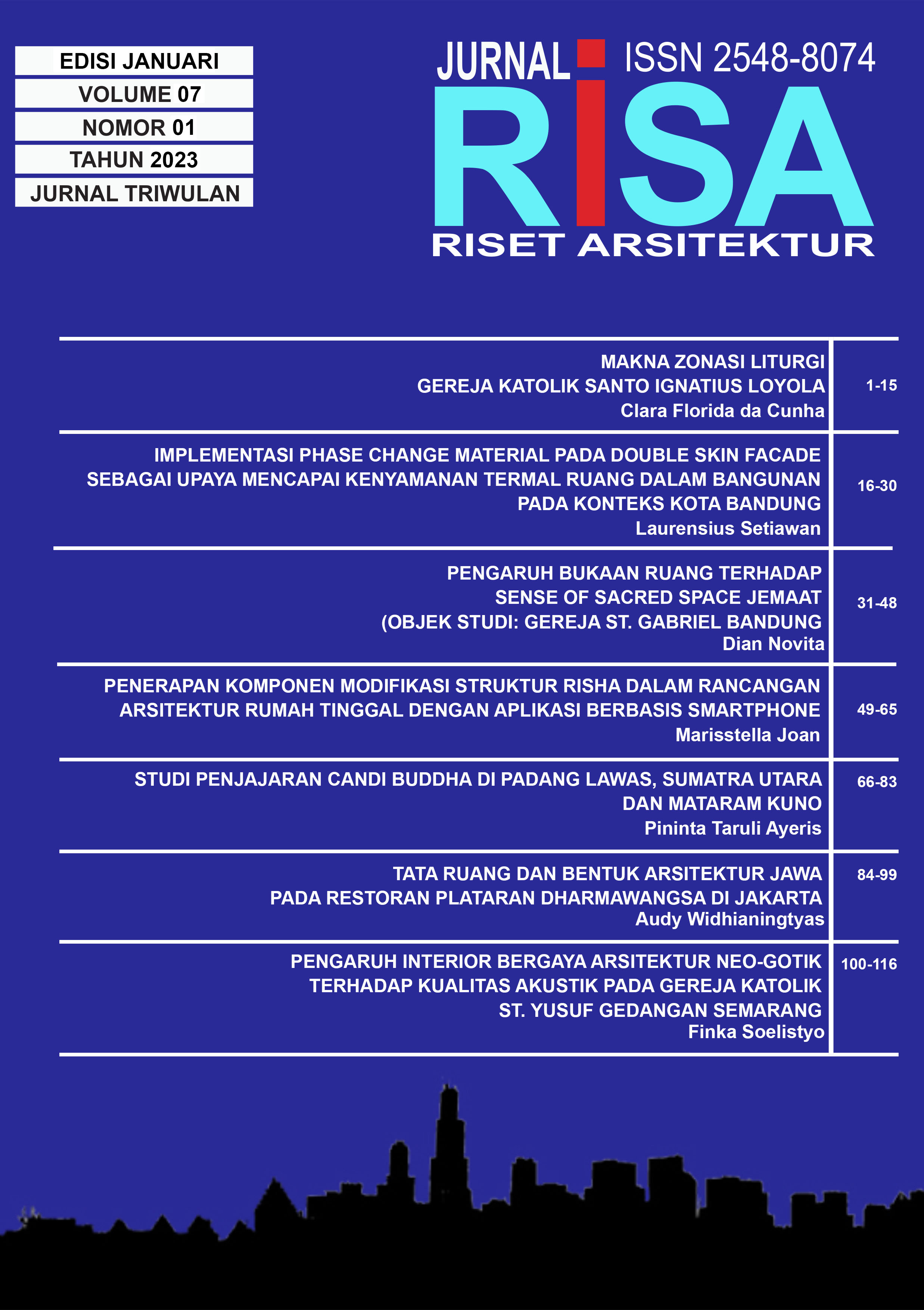SPATIAL LAYOUT AND JAVANESE ARCHITECTURE FORM AT PLATARAN DHARMAWANGSA RESTAURANT JAKARTA
DOI:
https://doi.org/10.26593/risa.v7i01.6364.84-99Abstract
Abstract - Indonesia’s rich culture can be reflected by its traditional architecture, one of which is Javanese architecture with its meaningful philosophies. Unfortunately, the existence of traditional Javanese architecture in this modern era is fading. Plataran Dharmawangsa exists as an example of the preservation of Javanese architecture which is still popular today, even though it has undergone some adjustments both in function and design. This has sparked an interest on studying the space and form of Javanese architecture in Plataran Dharmawangsa restaurant in Jakarta.
In order to obtain answers for the question, a study for theories to underlie this research was conducted. The theory studied are theories of spatial layout and form of Javanese architecture, in terms of orientation, zoning and spaces, forms of traditional-building, space-forming elements (head-body-feet concept), structure and construction, and ornamentation. A summary as analysis tool is then obtained.
In Chapter 3, the object of research, Plataran Dharmawangsa, is presented related to the theory of Javanese architecture that has been studied in chapter 2, starting from aspects of orientation, zoning, space, mass, space-forming elements, structures, and ornaments, through photographs and descriptions. This presentation focuses on the Sedap Malam Room, Kenanga Room, Melati Room, Kantil Room, and Surau.
In Chapter 4, the application of spatial layout and form of Javanese architecture to the object is analyzed using the analytical tools from chapter 2, the results are determined by parameters of ‘appropriate’, ‘adjusted’, or ‘not suitable’, and then summarized.
In Chapter 5, it is concluded that the spatial layout and form of Javanese architecture at the Plataran Dharmawangsa restaurant in Jakarta can be found with slight adjustments in three aspects. In terms of space, aspects of spatial orientation and zoning have shifted due to geographical factors and different function. In terms of form, the adjustment is in the aspects of the elements that make up the space, especially the wall variables which are now combined with more transparent materials. This supports harmony with nature and unites the diversity of facades at Plataran Dharmawangsa. These application of layout and form of Javanese architecture are now a characteristic and an added value for Plataran Dharmawangsa restaurant, with restaurant’s activities that can still be well accommodated.
Keywords: spatial layout, form, Javanese architecture, restaurant, Plataran Dharmawangsa, Jakarta
Additional Files
Published
Issue
Section
License
Copyright (c) 2023 Audy Widhianingtyas

This work is licensed under a Creative Commons Attribution-NonCommercial-ShareAlike 4.0 International License.












